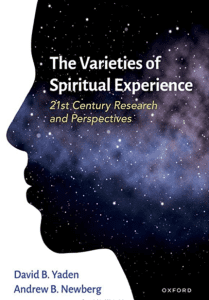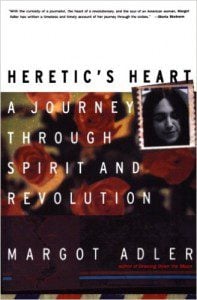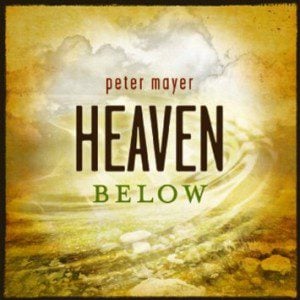Can you feel the “Wheel of the Year” turning?
In this season of each day growing incrementally shorter, can you sense our inexorable movement, here in the Northern Hemisphere, toward Winter Solstice, the darkest day of the year? It can be easy to feel caught up in the darkening of our days: disheartened, discarded, even depressed. At various times, I have experienced each of these responses to winter.
As a way of navigating seasonal shifts, I have become increasingly interested in and benefited from being attentive to the annual cycle of seasonal festivals known in paganism as the Wheel of the Year. The two most obvious turning points are the two solstices: winter and summer. And here on the edge of the Winter Solstice — with sunrise after 7 a.m. and sunset before 5 p.m. — it can sometimes be hard to remember that, on the opposite side of the year, the time is coming again (baring a Mayan Apocalypse!) when sunrise will be before 6 a.m. and last until almost 9 p.m. During these current days of barely even 9-and-a-half hours of sunlight, it can be hard to envision a time six months from now of nearly 15 hours of daylight each day.
If you imagine the Wheel of the Year a circle with December at the top, and June at the bottom, then the two solstices bisect the Wheel of the Year into two halves. Adding the fall and spring equinox — when days are equal parts light and dark — at right angles to the solstices divides the year into quarters. Most of us are most familiar with these four major quadrants of the Wheel of the Year: Winter, Spring, Summer, and Fall. But what interests me most about paganism’s attention to the passage of time is the additional nuancing of the seasons into what are known as cross-quarter days. Instead of only four seasons, we are invited to notice eight equally-divided turning points in the cycle of seasons.
In our technology-filled world of 24/7 connection and almost constantly available artificial light, the Wheel of the Year redirects our attention back to the cycle of the seasons and how they affect us. At the same time, I should be clear that I’m grateful that when it gets dark outside, I can turn on the lights. I’m grateful that when it is uncomfortably hot or cold, we can adjust the thermostat. But my interest in the Wheel of the Year is in the ways it can help us be more attuned to rhythms of the natural world in the midst of our twenty-first century lives.
To name one of the negative ways that the seasons can affect us, in these shortening days, many people suffer from some degree of Seasonal Affective Disorder: “S-A-D.” The acronym “SAD” points toward the complex of symptoms that some people experience, including myself at times, in response to the decreased sunlight in the winter.
But the invitation of attuning yourself to the Wheel of the Year’s progression is far from all negative. If you are someone who is eager for winter to pass, then instead of waiting until Easter (or the Vernal Equinox) to celebrate the coming of spring, the Wheel of the Year marks early February as a midpoint between Winter Solstice and the first day of spring. Even by early February the days are noticeably longer, and that may be reason enough to pause and savor the lengthening of daylight. And so it goes that every month-and-a-half, you are invited to notice one of the eight annual turning points on the Wheel of the Year, which honor the ongoing cycle of seasons.
Of course the progression of seasonal change is not linear. There are anomalies. Earlier this week in Maryland, we had two glorious days in which the temperature was in the low 70s, before the low plunged promptly again below 30. But I loved those two days. If I wake up, and the weather is already at least 60 degrees, I’m happy. And I’m one of those people who rarely minds if the temperature is hot, humid, and more than 100 degrees. Midsummer is my favorite time of year, but I’m learning to love the winter — or at least I aspire to want to love the winter. And certainly the absence of sunlight makes me appreciate summer all the more.
I. Spiritual Practice and the Wheel of the Year
Having confessed my love of the summer and mixed emotions about winter, I invite you to consider if you have favorite and least favorite season. If so, what it is about your favorite time of year that you love? And what is it about your least favorite time of year that you most dislike?
Speaking for myself, I feel more fully alive in the summer. I have more energy, I naturally want to be outside more and it’s much easier for me to motivate myself to exercise. In contrast, the colder and darker it is outside, the easier it is for me to put exercising on the back burner. Perhaps if I were from a snowier climate, I might view the coming of the cold as a time to engage in winter sports. For whatever variety of reasons, different people have different seasonal proclivities.
The larger point is that your favorite time of year may be a clue to a related type of spiritual practice toward which you are most naturally inclined. Likewise, your least favorite time of year could be a clue toward a type of spirituality that might be an area of potential growth because it is the area you are naturally disinclined the explore. Of course, your favorite season and type of spirituality may well shift at different times in your life with changing circumstances. But for now I invite you to focus on the current season of your life, and what has been most true for you in recent years regarding your favorite and least favorite seasons.
To give some specific examples of what I’m talking about, the following seasonal typology adapts the work of theologian Matthew Fox.
If spring is your favorite season (either literally or metaphorically), the most natural corresponding spiritual practices might be artistic, creative endeavors — corresponding the flowering of new life.
If, like me, summer is your favorite season, you may be drawn to active, kinesthetic forms of spiritual practice (even dance, play, or games), particularly in the sun-drenched outdoors.
Those drawn to autumn, may be particularly ripe candidates to focus on transformation — both personal and societal — in parallel to the falling leaves.
Finally, those drawn to winter, may find spiritual practices of darkness, silence, letting go, and saying “No” to be particularly fruitful.
Importantly, these guidelines are not fixed rules, and I do not want to make the connection too literal between the actual season in nature and your spiritual inclinations. During the darkest winter, but you may find yourself ecstatic for any number of reasons. Conversely, the weather outside could be spectacularly pleasant, but circumstances in your life may place you in a much grimmer season.
The more important invitation, then, is to consider two perspectives. First, what spiritual practices might be most life-giving at various seasons of the year and at various seasons of your life? And, second, the Wheel of the Year can help you notice the metaphorical seasons that you have been neglecting. To this end, I will likely take time in future posts to reflect more fully on these spiritualities of the various seasons. But with the darkest day of this year approaching on Friday, December 21, I would like for us to focus for now on what it might look like to explore a “Spirituality of Winter.”
II. Dark Retreat: A Spirituality for the Darkest Day of the Year
As I said before, there are some insidious ways that our twenty-first century technologies prevent us from practicing a winter spirituality. Artificial light, televisions, and computer screens lure our attention away from ourselves and away from the changing seasons. The various screens in our lives — from televisions to tablet computers to smart phones — shine at a constant brightness no matter what the time day or season. They can make it difficult to practice a winter spiritual journey of inwardness, simplicity, subtraction, darkness, silence, and letting go.
Importantly, the contemplative practices of winter spirituality are not the most superior spiritual practices, although they can have sometimes been presented that way. There are other points on the spiritual journey in which outwardness, complexity, addition, daylight, speech, and connection play equally vital roles. But a spirituality of winter may be particularly needed in our current culture in which far too many people seems to be “crazy busy.”
And as I reflected on what it might look like to talk about a “Spirituality for the Darkest Day of the Year,” I was reminded of an interview I heard a few a few years ago with Reggie Ray, a western teacher in the Tibetan Buddhist tradition. At the time of the interview, Ray had just returned from one of the most hardcore examples of a winter spirituality that I have ever heard of.
Keep in mind that Ray has been practicing meditation for more than four decades, so what I’m about to describe is one of those “Don’t try this at home” practices — unless you are significantly advanced as a meditator. As described in the interview, Ray has had a practice for at least a few years of what he calls a “Dark Retreat”: spending approximately one month each year in a specially designed cabin that is completely sealed from daylight.
Those of you like me who have experimented with various meditation practices have probably experienced how easy it can be, when your life gets busy, to skip your meditation time — although, ironically, those “crazy busy” days are when we could benefit the most from twenty-minutes or more of meditation, mindfulness, and bringing ourselves back to the present moment.
And locking yourself in a dark cabin is one way of limiting your access to some of the standard distractions that can prevent us from practices like meditation. Reflecting on his experience spending a month on Dark Retreat, Ray says:
you go in, you turn the lights off, and there you are. It’s you and it’s the darkness, and there’s really nothing to do. If you decide that you want to anesthetize yourself by going for a walk, it’s not available. If you decide you want to pick up a book and read it, or turn on the TV, or do any of the millions of things we all do to distract ourselves from our own experience and our own life, it’s not available. So the only practice in the darkness is simply to sit and open, sit and open, sit and open, and let go, let go, let go of whatever self-protective device you happen to come up with.
And the goal, at least in the tradition of Buddhism that Ray practices, is to cultivate greater openness to the fullness of each, ever-arising present moment. In the pursuit of greater openness, however, there are fortunately less severe starting points than booking your next vacation in a cabin completely sealed away from any light source.
III. A Spirituality of Winter
Even if most of us aren’t quite ready now — or ever — to spend a month in a completely dark cabin, with Winter Solstice less than two weeks away, now is perhaps an ideal time to consider what aspect of a winter spirituality might be most life-giving to you in this season of your life. Consider, for instance, if any of the following prompts particularly resonate with you.
If a spirituality of winter is about the inward journey, when is the last time you spent some quality time with yourself, being attentive to what is going on inside of yourself? There’s a critical difference between isolation and solitude. In the positive sense of solitude — choosing intentionally to cultivate time alone — when did you last take a long walk by yourself without any distractions like an iPod? When did you last take time to journal? Similarly, if the spirituality of winter is about the inward journey, perhaps going a therapist or spiritual director could be seen as a central practice in a winter spirituality.
If a spirituality of winter is about simplicity, is there anything you feel led to let go of in your life? As we enter this season of bare trees and stark landscapes, we can see the transformation of the external world as an invitation to ask what we need to allow to fall away from our lives.
On a more humorous note, if a spirituality of winter is about embracing darkness and silence, I’m reminded of the writer Ann Lamotte’s spiritual practice of remembering the acronym W.A.I.T. whenever she finds herself speaking too fast and too unreflectively. She thinks to herself, “W.A.I.T.,” which stands for: “Why Am I Talking!”
To return to my own earlier confession about seasonal preferences, despite my longterm interest in the practices of what could be called a winter spirituality (the inward journey, silence, meditation, darkness, and simplicity), my most natural inclination is toward the summer. There’s so much I want to do and see. There are so many wonderful books to read, movies to see, and songs to listen to! So ultimately, the invitation is simply to consider what forms of spirituality are most life-giving to you at various seasons of the year and at various seasons of your life — as well as what seasons and approaches you may have been neglecting that could be potential areas of growth.
Application: Practicing a Winter Spirituality
However, since we are approaching Winter Solstice, I would like to invite you to experiment briefly with what it feels like to practice a winter spirituality through a brief silent meditation guided by these words from Reggie Ray’s experience of spending one month a year in the solitude of dark cabin:
in the darkness, what you’re doing is: you start thinking, you come back to your body, you come back to the feeling of your body, you come back to the experience of the darkness. And then you start thinking again, and you start spinning out, and then you bring yourself back…. The technique is you don’t follow your thinking process. You simply bring yourself back, over and over, to the literal experience of being in your body, breathing, your heart beating, and your experience of the darkness all around you, which is a nonverbal, nonconceptual, totally literal experience.
As we near the darkest day of the year, the invitation is to be present, without the distraction of light, to the aliveness of your body in this present moment.
Notes
1 Matthew Fox, Original Blessing: A Primer in Creation Spirituality Presented in Four Paths, Twenty-Six Themes, and Two Questions.
2 Tami Simon, “Dark Retreat: An Interview with Reggie Ray,” available at http://www.soundstrue.com/podcast/reginald-ray-dark-retreat/.
3 “Anne Lamott’s directions for grandparents: ‘Some Assembly Required,’” available at http://www.cnn.com/2012/04/06/living/anne-lamott-boomer/index.html.
The Rev. Dr. Carl Gregg is a trained spiritual director, a D.Min. graduate of San Francisco Theological Seminary, and the minister of the Unitarian Universalist Congregation of Frederick, Maryland. Follow him on Facebook (facebook.com/carlgregg) and Twitter (@carlgregg) .
Learn more about Unitarian Universalism:
http://www.uua.org/beliefs/principles/index.shtml












